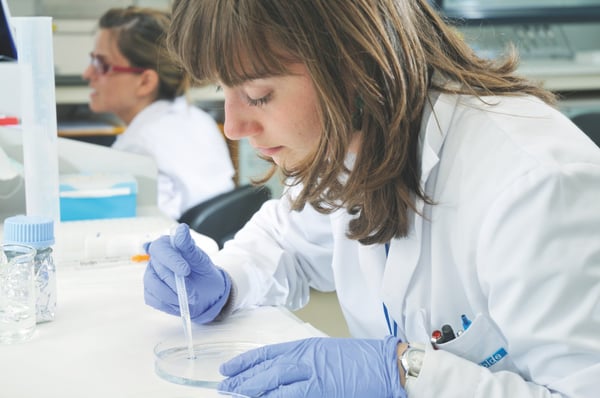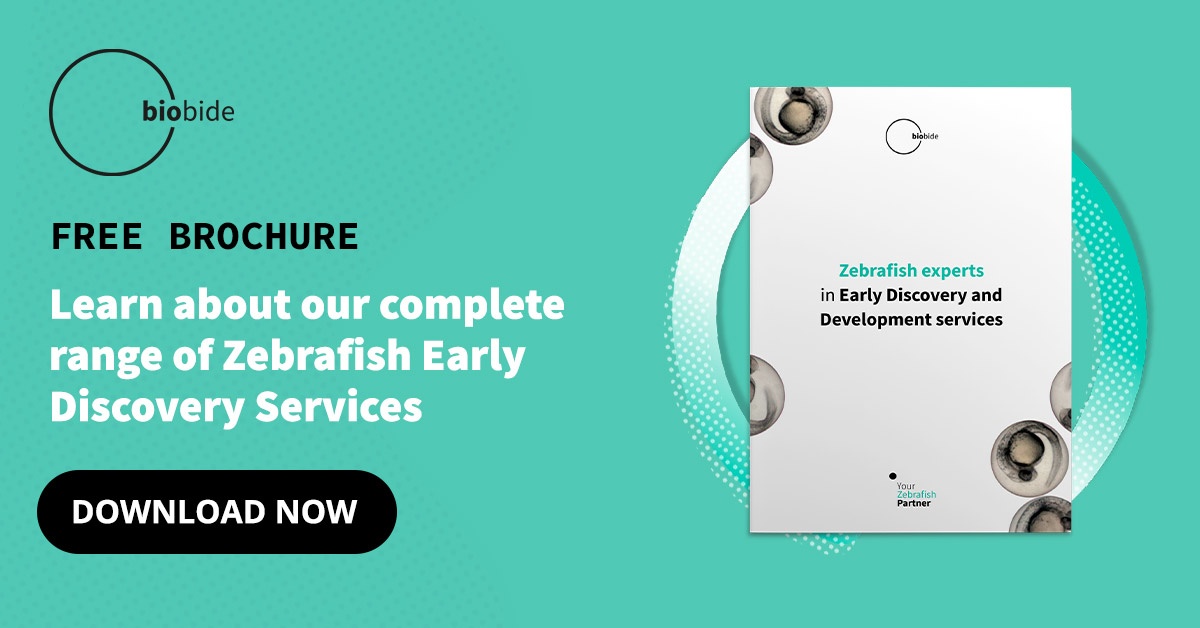There are two efficient screening methods which are widely used to sort out compounds in early Drug Discovery. These methods include High Throughput Screening (HTS) and High Content Screening (HCS). While the former sorts useful compounds quickly and efficiently from a very high number of candidates for new drugs, the HCS uses an imaging-based multi-parametric analysis to identify compounds that could impact the efficacy of these drugs. In this article, you will learn about what HCS is, different methodologies that are used, and common practices. We’ll also discuss how Zebrafish can be incorporated into the High Content Screening process. Let’s get started!
What is High Content Screening?
High Content Screening, is a well-established method used more commonly for the multi-parametric analysis of cellular events. It is specifically used for biological research and toxicity screening during Drug Discovery. Thus, the HCS technology can be used to determine whether a drug candidate modifies disease course or not. High Content Screening mainly identifies micro-molecules such as peptides or RNAi that alter the cell morphology and phenotype. These changes in the morphological and phenotypical status can induce increases or decreases in the synthesis of cellular products, such as proteins, and changes in the visual appearance of cells.
In High Content Screening, the substance or compound is firstly incubated with the in vitro-based assay of choice, and after, the molecular components and structures of the cells are investigated. The most common investigation consists of labeling proteins with fluorescent labels. Changes in the cell phenotype are measured by automated image analysis. Using fluorescent labels with different peaks of absorption and emission makes it possible to estimate various distinct cellular components at the same time.
High Content Screening Methods
High Content Screening methods can be considered as toxicology assays on some level since they work by measuring the cell's physiological response toward any environmental or chemical stimulus. The physiological response varies from relatively simple changes of acute cytotoxicities, before-mentioned as cell counts and cell morphology, to more particular changes of specific organelles. HCS can be applied to many circumstances, often when a multi-parameter measure where cross-correlation of multiple events can help define exact toxic states. HCS has gained a firm foothold in Drug Discovery and optimization especially in the area of cytotoxicity.
Zebrafish for High Content Screening
In vivo experimentation is a common animal experimentation model used by biological researchers all around the globe. Monkeys and mice share multiple genes with us humans. However, in the last few decades, new ethical alternatives have emerged, such as Zebrafish.
Zebrafish are a great in vivo option for Drug Discovery and High Content Screening. Zebrafish embryos are completely transparent and can be grown and maintained simply. 70% of Zebrafish genes are found in human cells. Moreover, 84% of disease gene homologs are shared between humans and Zebrafish. An additional advantage of using zebrafish larvae instead of cell-based assays in HCS is that larvae are whole organisms where all physiological interactions are taken into account and assays using these fish are still considered in vitro assays while they are under 5 days post-fertilization.
Thanks to the application of the optical translucency of the zebrafish embryos, High Content Screening using Zebrafish is very beneficial. Similar to many fish, Zebrafish easily absorb dissolved substances found in the water. Scientists can take advantage of this ability by placing the required substances into the water. These substances can then modify the genetic coding of the organism, allowing researchers to analyze the effects of these added mutations. Scientists are also able to use genetically modified fish to turn off or on some genes. Compared to other animals, it is easy for researchers to experiment with the toxicity of candidate substances or with the side effects of drugs on the fish. As the fish embryos can survive in very small containers with a volume much smaller than one milliliter, it means that a large number of substances can be tested in a very small amount of space, contributing also to savings in the number of drugs.
Another benefit is that fluorescent labels can be infused with the screening molecules. For example, if we were experimenting with an S.Pneumoniae specific antibiotic, we could infuse a fluorescent-labeled drug against the S.pneumoniae, and then watch the effect caused by the drug, using HCS. This would automatically quantify the area, fluorescence signal intensity, and would also analyze the whole fish and internal organelle properties, including eyes, yolk, spine, tail, brain, internal granules, and more. Statistical data is then calculated per fish and organelle to provide evidence about the drug's activity.
As you can see, the small but mighty Zebrafish can have a big impact on the Drug Discovery process and can easily aid the High Content Screening. High Content Screening is a crucial aspect of the Drug Discovery process, and using the right methods can make or break your process.






